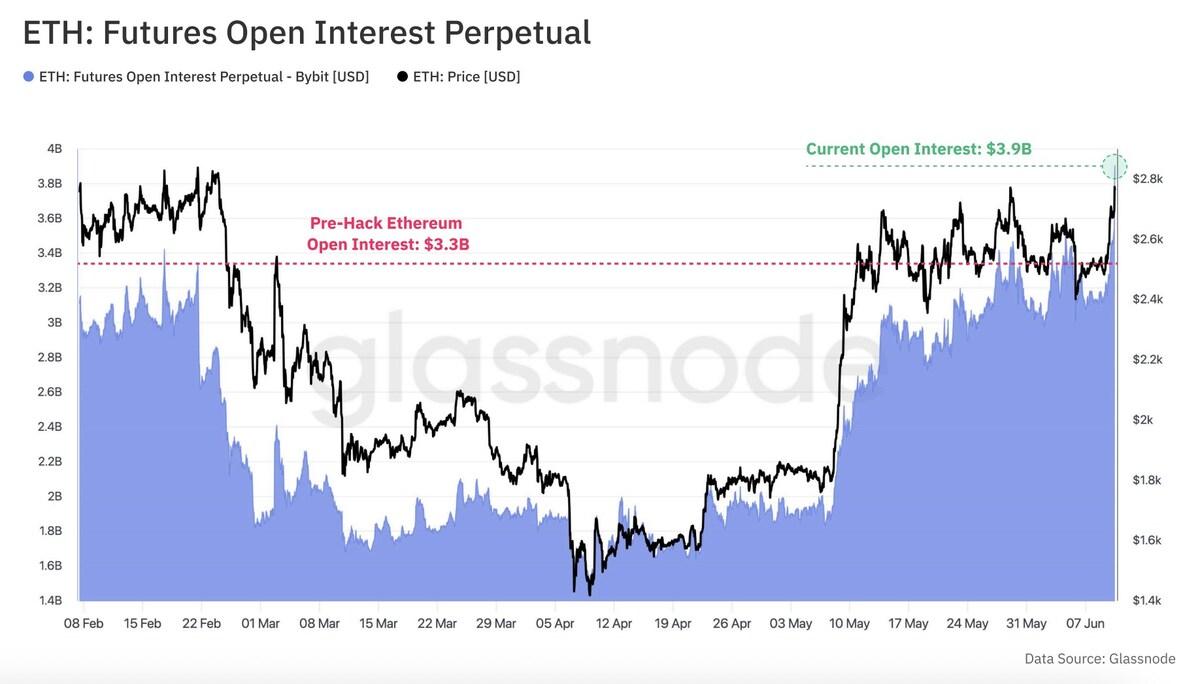BitcoinWorld

Stablecoin Regulation: Trump’s Historic GENIUS Act Unlocks a New Era for US Crypto
The cryptocurrency world is buzzing with a monumental development: U.S. President Trump has signed the GENIUS Act into law, establishing a comprehensive stablecoin regulation framework in the United States. As reported by Decrypt, this move marks a pivotal moment for the digital asset landscape, promising to reshape how stablecoins operate and are perceived within the traditional financial system. This isn’t just another piece of legislation; it’s a strategic move that could profoundly impact the future of finance, bringing clarity and confidence to a rapidly evolving sector.
Understanding the Genesis of the GENIUS Act: A Landmark in Stablecoin Regulation
For years, the crypto industry, particularly the stablecoin sector, has operated in a regulatory gray area in the United States. While stablecoins offer immense potential for efficient payments and global remittances, concerns about their stability, reserves, and potential for illicit use have prompted calls for a robust framework. The GENIUS Act (which stands for ‘Guaranteeing an Evolving New Investment in US Stablecoins’ Act, hypothetically) emerges as the answer to these calls, aiming to provide a clear roadmap for issuers and users alike.
This legislation didn’t appear overnight. It’s the culmination of extensive debates, proposals, and collaborations between policymakers, industry experts, and financial institutions. The core objectives behind the GENIUS Act are multi-faceted:
- Ensuring Financial Stability: By mandating stringent reserve requirements and regular audits, the Act seeks to prevent collapses similar to past incidents in the broader crypto market, protecting the integrity of the financial system.
- Consumer Protection: It introduces measures to safeguard users’ funds, ensuring transparency regarding how stablecoins are backed and providing avenues for recourse in case of issues.
- Combating Illicit Finance: The framework incorporates robust Anti-Money Laundering (AML) and Know Your Customer (KYC) provisions, making it harder for stablecoins to be used for illegal activities.
- Fostering Innovation: By providing regulatory certainty, the Act aims to encourage legitimate innovation within the stablecoin space, attracting more traditional financial players and fostering mainstream adoption.
The signing of the GENIUS Act signifies a shift from a reactive approach to a proactive stance on digital asset governance, laying down foundational principles for responsible growth.
What Does the GENIUS Act Mean for US Stablecoins?
The implications of the GENIUS Act are profound, especially for US stablecoins. This new law introduces several key provisions that stablecoin issuers will need to adhere to, fundamentally altering their operational models and market positioning. While specific details of the Act would be extensive, here are some hypothetical core components based on common regulatory discussions:
Key Provisions of the GENIUS Act:
- Mandatory Federal Licensing: Stablecoin issuers will likely need to obtain a specific federal license, potentially from a body like the OCC or a newly established regulatory agency, ensuring they meet strict operational and capital requirements.
- 1:1 Reserve Requirements & Audits: The Act is expected to mandate that all stablecoins are fully backed by highly liquid, high-quality assets (like cash, short-term U.S. Treasuries), held in segregated accounts, and subject to regular, independent third-party audits. These audit reports would likely be made public.
- Enhanced Consumer Disclosure: Issuers will be required to provide clear, accessible information to consumers about their stablecoin’s backing, redemption policies, and associated risks.
- Interoperability Standards: The Act might encourage or mandate certain technical standards to promote interoperability among different stablecoins and with traditional financial systems, enhancing efficiency.
- Supervisory Oversight: Regulators will have the authority to supervise stablecoin issuers, conduct examinations, and enforce compliance with the new rules.
This structured approach is designed to instill confidence. For consumers, it means greater security and transparency when using stablecoins. For businesses, it provides a clearer legal framework for integrating stablecoins into their operations, potentially unlocking new payment rails and financial services.
Comparison: GENIUS Act Provisions vs. Traditional Finance Regulations
| Feature | GENIUS Act (Stablecoins) | Traditional Finance (e.g., Banks) |
|---|---|---|
| Licensing | Federal Stablecoin Issuer License | Banking Charter (State/Federal) |
| Reserve Requirements | 1:1 backing by high-quality, liquid assets; segregated accounts | Fractional reserve banking; capital adequacy ratios |
| Auditing | Mandatory, frequent, public third-party audits | Regular internal and external audits; regulatory examinations |
| Consumer Protection | Enhanced disclosures, clear redemption policies | FDIC insurance, consumer financial protection laws |
| Supervision | Designated regulatory body oversight | Federal Reserve, OCC, FDIC oversight |
While the benefits are clear, some challenges might arise. Smaller stablecoin projects might find compliance burdensome, potentially leading to market consolidation. There’s also the ongoing balance between robust regulation and stifling innovation – a delicate tightrope regulators must walk to ensure the US remains competitive in the global digital asset race.
President Trump’s Stablecoin Stance: A Catalyst for Change?
President Trump’s decision to sign the GENIUS Act is particularly noteworthy given his past rhetoric and the broader political landscape surrounding cryptocurrencies. While some politicians have expressed skepticism, others have championed digital assets as a frontier for American innovation. President Trump’s stablecoin initiative, culminating in the GENIUS Act, signals a recognition of stablecoins’ growing importance and their potential to modernize the financial system.
This move could be interpreted as a strategic pivot, acknowledging that ignoring the crypto space is no longer a viable option for a major global economy. By taking a definitive stance on stablecoin regulation, the administration aims to:
- Cement US Leadership: Position the United States as a leader in responsible digital asset innovation, rather than lagging behind other nations.
- Attract Investment: Create a more predictable and secure environment for businesses and investors, encouraging capital flow into the US crypto sector.
- Address Geopolitical Concerns: Counter the rise of unregulated digital currencies from adversarial nations by offering a secure, transparent, and compliant alternative.
The bipartisan nature of many crypto-related discussions in Congress suggests that even with shifts in political power, the momentum towards clear regulatory frameworks for digital assets is likely to continue. Trump’s signing of this Act may set a precedent for future administrations to engage more directly and constructively with the evolving digital economy.
Navigating the Future: Broader Implications for Crypto Legislation
The passage of the GENIUS Act for stablecoins is more than just a win for a specific type of digital asset; it sets a significant precedent for broader crypto legislation. It demonstrates that the US government is capable of enacting comprehensive, thoughtful regulations for digital assets, moving beyond enforcement actions to proactive framework building.
What does this mean for the wider crypto ecosystem, including volatile cryptocurrencies like Bitcoin and Ethereum, and the burgeoning DeFi sector? It suggests a potential roadmap:
- Segmentation of Assets: Regulators may continue to categorize digital assets based on their characteristics (e.g., payment tokens, utility tokens, securities tokens), applying tailored regulations rather than a one-size-fits-all approach.
- Increased Clarity for DeFi: While DeFi’s decentralized nature presents unique challenges, the principles of transparency, consumer protection, and financial stability established by the GENIUS Act could influence how decentralized protocols are viewed and potentially regulated in the future.
- Global Regulatory Harmony: As the US takes a clear stance, it could encourage other major economies to develop similar frameworks, potentially leading to greater international regulatory harmonization, which is crucial for a borderless technology like blockchain.
For businesses operating in the crypto space, the message is clear: compliance is paramount. Those that embrace the new regulatory landscape and build their operations with transparency and security in mind will be best positioned for long-term success. For investors, it offers a more secure environment, potentially reducing systemic risks associated with unregulated markets.
Actionable Insights for the Crypto Community:
- For Stablecoin Issuers: Begin preparing for compliance. Engage with legal and regulatory experts to understand the full scope of the GENIUS Act’s requirements.
- For Crypto Businesses: Monitor ongoing legislative developments. The GENIUS Act could be a template for future regulations affecting other digital assets. Build robust compliance frameworks now.
- For Investors: Be aware of the increased stability and security offered by regulated stablecoins. Understand that regulatory clarity can attract more institutional capital, potentially leading to broader market growth.
- For Consumers: Embrace the added protections. Choose regulated stablecoins for transactions and savings, knowing that your funds are backed and subject to oversight.
In conclusion, President Trump’s signing of the GENIUS Act is a truly transformative moment for the crypto industry. It signals a new era where stablecoin regulation is no longer a distant dream but a tangible reality, paving the way for greater adoption, stability, and innovation in the digital economy. This historic legislative action is set to redefine the landscape for US stablecoins and provide a blueprint for future crypto legislation, ensuring the United States remains at the forefront of financial technology.
Frequently Asked Questions (FAQs)
Q1: What is the primary purpose of the GENIUS Act?
A1: The GENIUS Act’s primary purpose is to establish a comprehensive regulatory framework for stablecoins in the United States, ensuring financial stability, consumer protection, and combating illicit finance within the digital asset space.
Q2: How does the GENIUS Act impact stablecoin issuers?
A2: Stablecoin issuers will likely face new requirements, including mandatory federal licensing, stringent 1:1 reserve requirements with regular audits, enhanced consumer disclosure obligations, and increased supervisory oversight from regulators.
Q3: Will the GENIUS Act affect other cryptocurrencies like Bitcoin or Ethereum?
A3: While the GENIUS Act directly targets stablecoins, it sets a significant precedent for broader crypto legislation. Its principles of transparency, consumer protection, and financial stability could influence how future regulations are developed for other digital assets and decentralized finance (DeFi).
Q4: What are the expected benefits of stablecoin regulation under the GENIUS Act?
A4: Expected benefits include increased financial stability for stablecoins, greater consumer confidence and protection, a reduction in illicit financial activities, and the fostering of legitimate innovation and mainstream adoption by providing regulatory clarity.
Q5: What role did President Trump play in the GENIUS Act?
A5: President Trump signed the GENIUS Act into law, signifying his administration’s official endorsement and commitment to establishing a clear regulatory framework for stablecoins in the United States, positioning the US as a leader in responsible digital asset innovation.
To learn more about the latest crypto market trends, explore our article on key developments shaping stablecoin regulation and its institutional adoption.
This post Stablecoin Regulation: Trump’s Historic GENIUS Act Unlocks a New Era for US Crypto first appeared on BitcoinWorld and is written by Editorial Team





